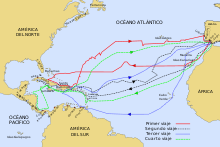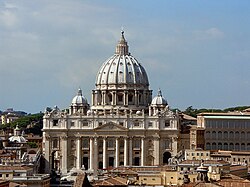Se entiende por Renacimiento al fenómeno cultural que, en el inicio de la Edad Moderna, retoma los principios de la cultura clásica (griegos y romanos) actualizándola a través del Humanismo, sin renunciar a la tradición cristiana, pero sustituyendo la omnipresencia de lo religioso del mundo medieval por una afirmación de los valores del mundo y del hombre, independientemente de su creencia religiosa.
A su concepción estática del universo, en todos los aspectos, va a suceder una visión dinámica plena de iniciativas y experimentaciones, que va a cambiar en menos de un siglo el panorama económico, social, científico, político y geográfico del mundo.


En el aspecto artístico, el Renacimiento supone un mundo apoyado en los modelos de la antigüedad greco-romana que comienzan a estudiarse de un criterio riguroso, y se buscan en ellos unas definiciones científicas y matemáticas de la belleza y la armonía. La belleza va a ser la expresión de un orden intelectual y profano, que en la medida, el orden y la proporción encuentra su propio lenguaje. Se estudiará la naturaleza y se encontrará en una ciencia nueva, la perspectiva , el modo adecuado de su representación, y el cuerpo humano desnudo será, el no va más, de las perfecciones y el objeto fundamental de los artistas, como reflejo del antropocentrismo del pensamiento humanista.


Es Italia donde cristaliza antes esta nueva visión del mundo y del arte. Está mas avanzada social y económicamente por su organización de ciudades abiertas, y enriquecida por el comercio europeo a lo largo de la Edad Media. En el siglo XV madura Italia sus formas con los abundantes restos del mundo romano presentes en su suelo, que la burguesía acomodada colecciona, estudia y valora como índice de cultura.
Por el contrario, en el resto de Europa este estilo Renacentista irrumpirá mas tarde, y será gracias a las formas maduradas de Italia. El Renacimiento español, francés, alemán, Holandés,..será un fenómeno surgido al contacto con lo italiano y sus orígenes temporales hay que fijarlos en torno a 1490- 1500, cuando en Italia ya se ha realizado mucho de lo más significativo del estilo nuevo.
La basílica de San Pedro de Roma.






